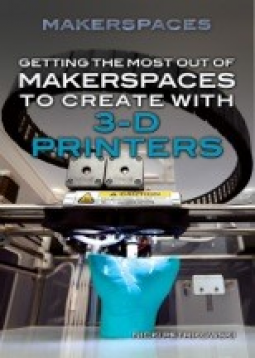
Getting the Most Out of Makerspaces to Create 3-D Printers
by Nicki Petrikowski
This title was previously available on NetGalley and is now archived.
Send NetGalley books directly to your Kindle or Kindle app
1
To read on a Kindle or Kindle app, please add kindle@netgalley.com as an approved email address to receive files in your Amazon account. Click here for step-by-step instructions.
2
Also find your Kindle email address within your Amazon account, and enter it here.
Pub Date Sep 24 2014 | Archive Date Apr 04 2015
Description
With information on where to find makerspaces to the latest types of 3-D printers available, this resource grabs the interest of engineering-minded students and sets them on course to excel in STEM classes. This book includes examples of interesting beginner projects.
Advance Praise
No Advance Praise Available
No Advance Praise Available
Marketing Plan
No Marketing Info Available
No Marketing Info Available
Available Editions
| EDITION | Other Format |
| ISBN | 9781477786024 |
| PRICE | |
Average rating from 8 members
Featured Reviews
 Angela M, Librarian
Angela M, Librarian
As a library that has a makerspace, this did give me some ideas of things that were possible to do. It was an interesting read.
 Luke L, Educator
Luke L, Educator
My local library has opened a space that includes technology such as 3D printers so the title of this book immediately caught my eye. I was impressed by the Maker Ethos, which are lessons I want my students to embrace and learn.
"Makers believe that if you can imagine something, you can make it. Even if you don't know how yet, you can learn. And learning does not need to take the form of formal education. Marking is often more hands-on, which means learning by doing. Hands-on learning requires a willingness to fail and not get discouraged. Rather, you learn from any mistakes and make something better."
"You don't have to be perfect at what you are trying to do. In fact, you can hardly be perfect at something you haven't tried yet in practice. But you have to keep on trying, continuously improve upon what you have done, accept challenges, and do your best to overcome them."
However, the introduction felt long. Considering the title of the book is "Getting the Most Out of Makerspaces to Create 3-D Printers", I expected to get to the "getting" sooner. All of the information presented is very interesting and presented in a while that is accessible. But "Where to Begin" doesn't come up until the end of the book. And when I was done, I felt that I had a good grasp of the Maker philosophy and foundation but little information about how to create my own or get the most out of one that already exists.




